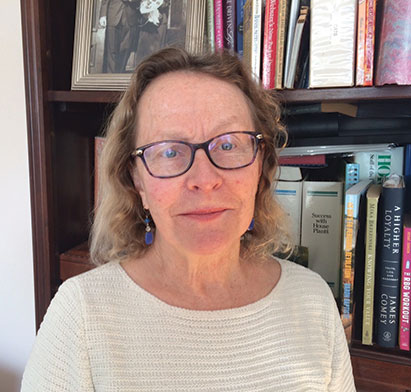 DEGREES: B.S. in biology; interdisciplinary Ph.D. in sustainable development, Erasmus University, Rotterdam, Netherlands
DEGREES: B.S. in biology; interdisciplinary Ph.D. in sustainable development, Erasmus University, Rotterdam, Netherlands
JOB TITLE: Executive director, Sustainable Hudson Valley
FAVORITE TRINITY MEMORY: Academically, we had study nights for physical chemistry where most of the class got together over pizza and worked out problems. That was huge. On the fun side, a friend and I actually sneaked into the Chapel tower one spring night with our sleeping bags and camped there. It was magical!
What is the aim of Sustainable Hudson Valley? Our mission is to speed up, scale up, jazz up, and leverage our region’s efforts to fight climate change. We work in communications strategy, coalition building, and market development for electric vehicles and renewable heating technologies. Some of our work is in local and regional planning. For example, we’re just wrapping up a planning process with a 5,000-person community called Marbletown to plan how it will transition to 100 percent renewable energy over the next 10 years or so (or get close). Other communities are already gearing up to make their own similar plans.
What led to your interest in sustainability? My commitment grew out of the experience of my generation. I was in high school for the first Earth Day. We had world-class speakers coming through, like the population biologist Paul Ehrlich. There was never a question for me that we have to focus attention on how to create rapid change, change that lots of people can embrace. I tried to put my head down and just get a job—as a computer programmer—but I couldn’t do it for long. In Boston, where I lived, there was concern about the nuclear power plant being built at Seabrook, New Hampshire, on a very-hard-to-evacuate peninsula; I got involved on that issue, which taught me about energy systems for public safety and resilience as well as resource efficiency. Concern about nuclear power and weapons was my point of entry into the environmental movement, but I also was inspired by positive innovation locally—community gardens, architects creating buildings run entirely by renewables, and so much more.
I was determined to be part of something restorative for the world, way before I had any idea what it would look like. I took time off and traveled. OK, I’ll tell you: I hitch-hiked 14,000 miles around the United States, Canada, and Mexico by myself in 1980. Not recommended, but worth it! I saw the Grand Canyon and Vegas, did white-water rafting, and visited friends all over. Once I was picked up by a schoolteacher in central California, and she drove me through an orange grove, stopping so we could fill up our bags with fallen oranges. Some of the trip was about decompressing, but it became all about learning. I remember sitting in small-town public libraries and reading whatever looked interesting. When I got home, I was lighter, stronger, and clearer. I also was determined to find a career of growth and contribution. I started as a journalist and author, seeing that as the way to learn and follow opportunities. I wrote a series of profiles of dissidents, people who struggled to find their ethical path. Then I turned those insights into a values-centered career guide called Making a Living While Making a Difference, which has gone through three editions and just might see a fourth. The insight there was about how much people can soar when they are working from a healthy commitment—and that’s a key to the work I do now.
What do you enjoy most about your work? The people, the problem-solving, and the progress we make.
What are the biggest challenges you face? Many nonprofit leaders will tell you it’s finding the money. In my view, when you have the clarity and develop the right relationships, the money tends to follow. The biggest challenge for me and our organization has been finding the groove of program and strategy that nobody else is working in, where our unique strengths can come into play and create value.
How did your time at Trinity prepare you for what you do now? I chose Trinity for the flexibility. I was able to take some of everything, from neurophysiology to dance. When you are leading an organization that is pretty much creating its road map while navigating, you need a huge tolerance for ambiguity and uncertainty, as well as an ability to create mental models that are useful and compelling to others.
What was the most memorable course you took at Trinity? Judo, because I learned to fall, and skiing, because I learned how not to. All my bio courses were memorable for the sense of wonder they brought.
